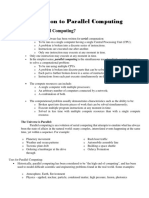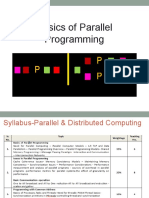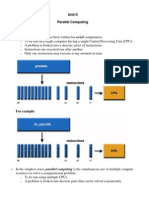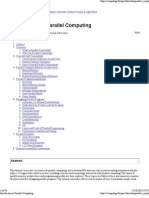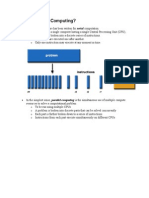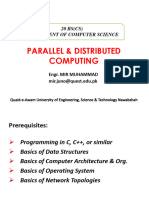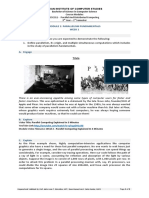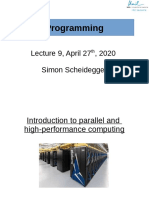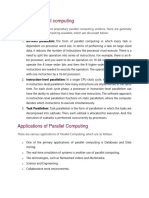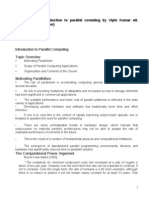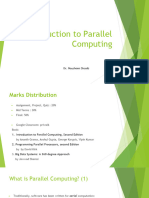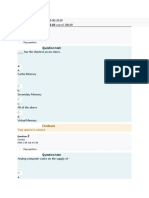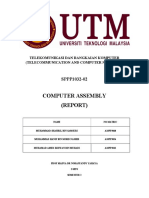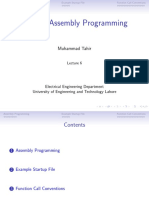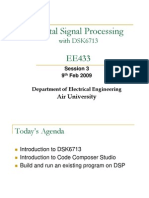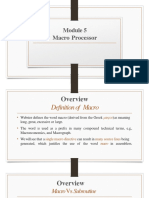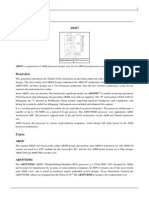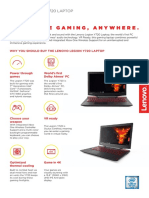0% found this document useful (0 votes)
25 views52 pagesChapter 1 Parallel - Computing General Concepts
The document provides an overview of parallel and distributed computing, highlighting its evolution from serial computing and its applications across various fields such as science, engineering, and commercial sectors. It discusses the benefits of parallel computing, including time and cost savings, the ability to solve larger problems, and the use of non-local resources. Additionally, it covers key concepts, architectures, and classifications of parallel computing systems, as well as future trends in the field.
Uploaded by
Atique DahriCopyright
© © All Rights Reserved
We take content rights seriously. If you suspect this is your content, claim it here.
Available Formats
Download as PPTX, PDF, TXT or read online on Scribd
0% found this document useful (0 votes)
25 views52 pagesChapter 1 Parallel - Computing General Concepts
The document provides an overview of parallel and distributed computing, highlighting its evolution from serial computing and its applications across various fields such as science, engineering, and commercial sectors. It discusses the benefits of parallel computing, including time and cost savings, the ability to solve larger problems, and the use of non-local resources. Additionally, it covers key concepts, architectures, and classifications of parallel computing systems, as well as future trends in the field.
Uploaded by
Atique DahriCopyright
© © All Rights Reserved
We take content rights seriously. If you suspect this is your content, claim it here.
Available Formats
Download as PPTX, PDF, TXT or read online on Scribd
/ 52





